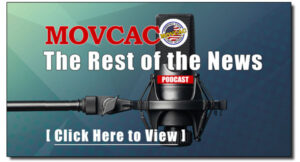Deborah DeGroff
July 15, 2023
Parents across the nation are waking up and realizing that they need to look beyond the covers of the books their children are reading and examine the content between the covers. They are suddenly alarmed over the obscene nature of many of these books. Many would be surprised to learn that graphic sex in kiddie books didn’t begin in the last decade. This isn’t new.
Let’s take a quick journey down memory lane to remember what young adult books were like in the seventies—FIFTY YEARS AGO!
It’s Not what You Expect, by Norma Klein was published in 1973. Sarah gets an abortion in New York in this story. Roe vs Wade was decided in 1973 but four states already permitted abortions for any reason prior to that. I’m sure that this book rolling off the presses in 1973 wasn’t an accident. Abortion was depicted as relatively inexpensive, not too painful, and Sarah was home by dinnertime with her parents being none the wiser.
In 1975, Judy Blume’s book, Forever, was published. This story was a commercial for Planned Parenthood. The sex scenes between Katherine and Michael are detailed. Katherine admits she is disappointed not to have an orgasm the first time they do it, but the next time, “I came right before Michael and as I did, I made noises, just like my mother. Michael did too.” (p 150) Earlier in the story, Katherine’s mother had given her an article to read explaining that “…enjoyable love-making, culminating in orgasm, isn’t easy. It usually requires mutual education. It takes time, effort, and patience to learn to make love.” (p 120)
In 1977, Norma Klein’s It’s OK If You Don’t Love Me was published. Family nudity and sex education are just two of the subjects woven into the storyline. On page 104, Rifka, Mom’s friend, tells Mom about a discussion she had with her eighteen-year-old daughter. Her daughter asked her if she had an orgasm every time. Her daughter feels cheated if she doesn’t.
“. . . it took me ten years to even come close. These kids! They want orgasms on a silver platter! I could have belted her!”
Love Is One of the Choices by Norma Klein was published in 1978. Topics covered were abortion, pornography, a sexual relationship between a high school girl and her teacher, feminism, and an art class with both minors and adults who pose in the nude for the others to sketch.
Maggie wasn’t sure she was going to enjoy having sex, but she wanted to go through it just to pass out of “that awful state.” Pages 111-114 detail Maggie and Todd’s first-time having sex.
Many of the parents, teachers, and/or administrators read these types of books in the seventies and are not oblivious as to the words on the pages between the covers of children’s books. Kids dog-ear the “special” pages and pass them amongst themselves. Judy Blume recognized this and addressed it in Then Again, Maybe I Won’t in 1971. In the story, Joel underlines and paperclips pages in the books he reads. He shows twelve-year-old Tony some of the passages. “When I read Joel’s paperbacks, I can feel myself get hard.” (49-50)
Of course, the aforementioned books seem tame compared to the current trash kids are reading. The goalpost keeps moving, and what came before becomes normative. That’s how it is done.
Obscenity grabs people’s attention but what about the other content in children’s books today? Subjects like:
Critical Race Theory with hatred for people who are born with white skin?
Anti-American/pro-Marxist sentiments?
Mockery of Judeo/Christian values?
LGBTQ+ subject matter in books for babies on up?
Gender bending?
Profanity? (over 1300 f-words in Run the Game, by Jason Myers, for example)
Social activism?
Sadomasochism, fetishes, and other deviancies?
The ideologies being drummed into children’s heads are problematic. But the elephant in the room is being ignored. Our children are being intentionally dumbed down. Yes, our generation was dumbed down. This has been going on for at least a hundred years. Can we finally recognize the tactics being used, and protect our own children?
Those of you who have read my book, are aware that instructional methods for reading, and metrics for reading levels are of great concern to me. Accelerated Reader (arbookfind.com) is used in many schools and libraries. Each book listed on their website includes a brief description, and both the interest and reading level. The statistics are alarming. In 2013-2015, Accelerated Reader (AR) listed 10 books for 9th-12th grade interest levels (high) that were written on a first-grade reading level (low). From 2014-2021, there were 13 books listed. In January of this year the number increased to 17. Today there are 48!
Why are books with subject matter intended for high school students written on a first-grade reading level? It is extremely concerning that slightly less than 1% of all the fiction books for 9th-12th grade interest levels are written on a 9th-12th grade reading level. Let me be clear: 99% of all the fiction books listed on Accelerated Reader that would interest 9th-12th graders are written below 9th-12th grade reading levels. 43% of the fiction for 9th-12th grade interest levels are written on a fourth grade or below reading level.
Are we to believe the marketing that these Hi/Lo books are primarily intended for English as a Second Language (ESL) students? If so, does the content of these books matter? What ideologies are being taught to ESL students?
Lastly, are reading levels valid?
These are some of the questions I will try to answer in Part 2.
Deborah DeGroff
whatsinsidechildrensbooks.com
Between the Covers: What’s Inside a Children’s Book?


